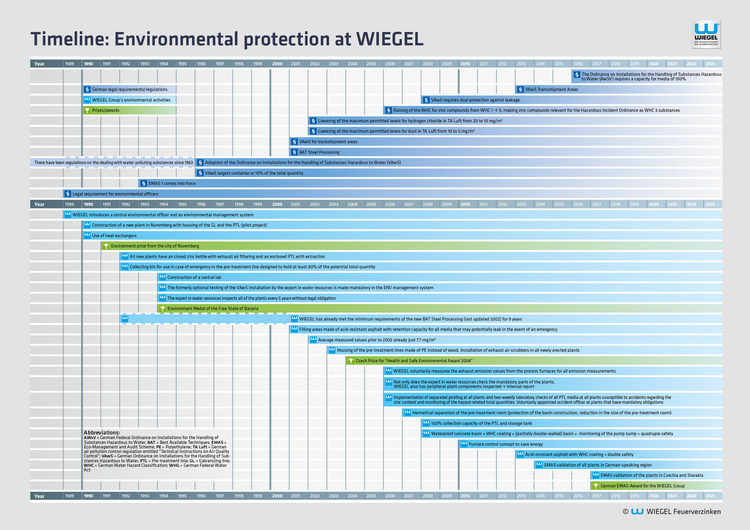If anyone
If anyone has any idea what the term “hot-dip galvanizing” actually means, they usually think of heat, smoke and toxic substances. The though conjures up images of “classical industrial plants” and in some peoples’ mind even smoking chimneys, noisy factories and polluted water. To put it briefly, “hot-dip galvanizing” and “environmentally friendly” aren’t generally seen as a pair of terms that belong together to an unbiased observer. This image of the galvanizing industry is shaped by the past, but at WIEGEL that has long been a thing of the past.
Now of course a metallurgical process,
Now of course a metallurgical process, which involves steel being dipped in a molten metal bath at 450 °C, is a different kettle of fish, from an environmental point of view, than running a bakery, for example. Nevertheless, we would like to show you, with this information, that there have been some decisive changes in the field of hot-dip glavanizing when it comes to environmentally friendly production processes in the last few decades.
Here at WIEGEL we made a significant contribution to this encouraging development, as we always strive to minimise both the environmental impact of our work, as well as making efficient use of the resources available. And we have always developed new technology and methods that are considered to set the standards within the industry and represent the state-of-the-art, which is why we are often described as a pioneer in environmental protection.
WIEGEL has always been
WIEGEL has always been an innovation driver within the industry and we have had the topic of environmental protection on our agenda for over 25 years. In many cases, we have introduced improvements in plant engineering and working processes, years before they were made mandatory by legislation. The timeline below shows a comparative overview of key legal regulations and the standards introduced by WIEGEL.

